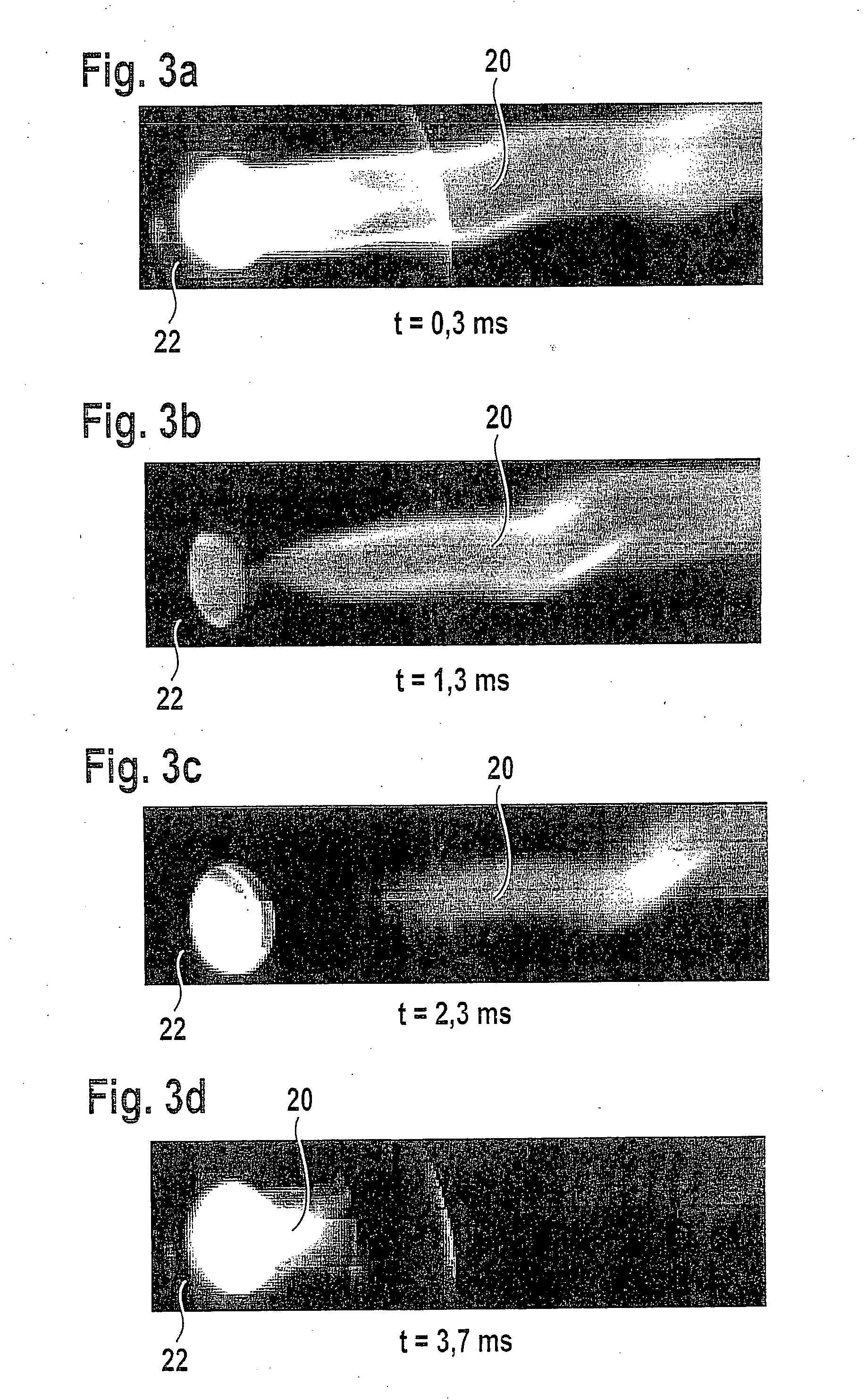Plasma system and method of producing a functional coating
a technology of plasma system and functional coating, which is applied in the field of plasma system, can solve the problems of high temperature in the plasma jet of several thousand degrees celsius, high cost of method, and complex evacuation techniques, and achieve the effect of higher energy of ions
- Summary
- Abstract
- Description
- Claims
- Application Information
AI Technical Summary
Benefits of technology
Problems solved by technology
Method used
Image
Examples
Embodiment Construction
[0029]The present invention is based on a high-frequency, inductively coupled plasma jet source such as that known in a similar form from E. Pfender and C. H. Chang, “Plasma Spray Jets and Plasma Particulate Interaction: Modeling and Experiments,” Convention Volume of the 6th Workshop on Plasma Technology, Technical University of Illmenau. In addition, a coating method similar to that already described in German Published Patent Application No. 199 58 474 is implemented with this system.
[0030]Specifically, FIG. 1 shows in detail a high-frequency, inductively coupled plasma jet source 5 having a pot-shaped burner body 25, which has on one side an outlet orifice 26, e.g., circular in design and having a diameter of 1 cm to 10 cm, provided with an orifice constrictor 22, which is preferably variably adjustable, i.e., shaped. In addition, plasma jet source 5 has a coil 17 integrated into burner body 25 in the area of outlet orifice 26, e.g., a water-cooled copper coil which may also be ...
PUM
| Property | Measurement | Unit |
|---|---|---|
| frequency | aaaaa | aaaaa |
| frequency | aaaaa | aaaaa |
| frequency | aaaaa | aaaaa |
Abstract
Description
Claims
Application Information
 Login to View More
Login to View More - R&D
- Intellectual Property
- Life Sciences
- Materials
- Tech Scout
- Unparalleled Data Quality
- Higher Quality Content
- 60% Fewer Hallucinations
Browse by: Latest US Patents, China's latest patents, Technical Efficacy Thesaurus, Application Domain, Technology Topic, Popular Technical Reports.
© 2025 PatSnap. All rights reserved.Legal|Privacy policy|Modern Slavery Act Transparency Statement|Sitemap|About US| Contact US: help@patsnap.com



